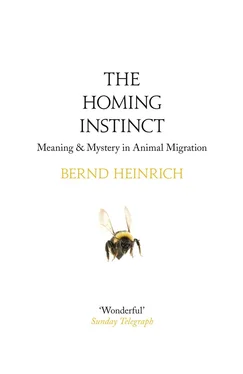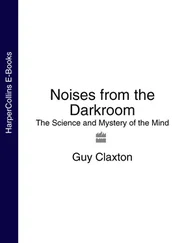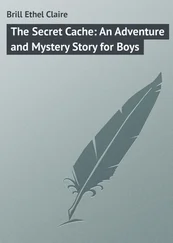I watched the pair for another hour. She by then occasionally fluffed herself out and, as she had done the day before, continued periodically to squat where she had pulled at or dropped sedge and other potential nesting material.
The pair continued their slow, deliberate steps that morning while meandering from one end of the bog to the other, as though inspecting every square centimeter of it, and at 9:00 p.m. we saw Roy jump high and with outstretched wings dance by himself out on the ice. Millie dashed by him with fluttering wings, to round out a mutual performance. A little later we heard a purring call as she spread her wings to the sides and stood still. Roy, with outstretched neck and elevated bill, jumped onto her back and, balancing himself with a few wing beats, mated. He dismounted after a couple of seconds. Both then bowed to each other and continued their walk. They were home, intended to nest, and had now sealed the deal.
Still, the lone bird that had tried to intrude on their turf did not easily abandon its intended claim. But why would this crane want a claim without a mate to nest with? Was it Oblio, their grown colt from last summer? Was he, now that Millie and Roy were re-nesting, finally being “thrown out of the nest” by his parents, who no longer tolerated company of any sort? I suspect this was the case. The offspring of most birds have a strong attachment to home. This emotion is a biologically relevant drive, because home is where reproduction has proven to be successful. But the young have a lifetime ahead of them, and if for some reason the parents don’t make it back home, the offspring could inherit their territory. If the parents do come back to reclaim their home, at least nearby territory would be more like the old home than the far-off unknown. Even if a bird is without a mate, finding a suitable territory is often a prerequisite to getting one.
Shortly after we had breakfast the next morning, the lone crane flew over once again, and the pair immediately launched their synchronized duet as a vocal challenge. This time, although the lone crane did not land, the pair jumped into the air and chased it until all three were out of our sight and hearing. But the pair returned soon and then again performed several nest-building probes. They again mated in what would become a routine for the next several days: at least once in the morning and once in late afternoon or at night.
When I first saw the cranes the next dawn, each was standing on one leg with its head tucked into its back feathers. Ice had again solidly covered their pond, after having partially melted along the edges the day before. Both Millie and Roy seemed to be asleep, although he, balancing himself on one leg, occasionally reached up with the other to scratch his chin and head with the toes of the foot. But whenever a crane called from the distance, both their heads shot up instantly, and they renewed their spirited in-unison call, she making the two short notes and her mate making one, at a lower pitch.
We had so far not seen them feed. Indeed, it was hard to imagine that there was food available in any case. If lucky, they might by now catch a vole or find a few of last year’s cranberries, but this year that would probably not be likely until days later when the snow would melt. A crane’s large body size requires much more food than a small bird’s, but that same large size is an advantage in tiding them over during lean periods, and thus to return to their homes before the anticipated flush of food becomes available.
As it got lighter on this dawn, the cranes soon had company. A pair of swans and then a small flock of five Canada geese flew by. A robin sang. By about 7:00 a.m., the crane pair became animated as well, walking over the bog while picking here and there, and again mating.
We did not see the pair most of that afternoon. The lone crane, seemingly to take advantage of their absence, again flew in and this time landed, looked around, and repeatedly made a trilling call. But in about fifteen seconds the pair flew in as if out of nowhere, and one of them sped over the ice as if to attack the interloper, which immediately flew off. The pair gave chase, and all three disappeared from sight. In several minutes the single bird returned. Again the pair came and caught up to the lone crane before it had a chance to take off, and this time they attacked it viciously, in a flurry of flailing wings.
The pair had by now, after the third day, won the major part of the battle. Barring accidents, they would within days lay their two eggs and go on to raise their colt. Normally both eggs hatch, but as in some eagles and vultures, usually only one chick survives, probably because one gets fed less and then weakens and eventually starves. Presumably through evolutionary history, for the fast growth required to reach full development and readiness to migrate by August, there has not been enough food to raise two colts at once. One might suppose the cranes could simply lay only one egg, but sometimes an egg does not hatch, and the second is insurance.
The pair seemed more animated after their last fight with the lone intruder, and by evening they again mated (for at least the third time that day). In most birds one mating is enough to fertilize the eggs. Perhaps several matings are insurance, but this seemed more than enough for insurance. Perhaps, like their dances, mating is additionally part of their bonding ritual.
A pair of mallards, and then a pair of pintails, arrived in the evening, and the ducks swam next to each other near the cranes at the edge of the pond, where some open water had reappeared during the day. The cranes ignored them and again walked in their stately manner back and forth across the ice of the pond, and now they pecked in the low vegetation being exposed along the edges. They were by now finding overwintered cranberries exposed by the melting snow.
On the evening before I would leave for my journey home, Christy and George hosted a potluck party. Shadows fell on the white frozen middle of the pingo as the western sky turned yellow and orange and the spruces became dark silhouettes. A pair of pintails again landed in the open water along the pond’s edge. The cranes were standing, each on one leg, their heads tucked into their back feathers. People crowded around the spotting scope in the living room, watching them occasionally shift position, lower a leg, poke a head out to look around. Suddenly the person then at the scope erupted with an exclamation: “They are mating!” She had seen the male approach the female with her spread wings, mount, flutter, and jump off. The pair had bowed to each other. Suddenly many people crowded around the scope to watch.
Why, I wondered, would anyone, or almost everyone, want to watch cranes mate? Why was nobody interested in watching the mating activity of the two ducks, or of the numerous redpolls? Could it be, I wondered, because we feel a closer kinship with cranes than with other birds?
Cranes are similar to us in many ways. Some are nearly as tall as a person. They walk on two long legs like us, albeit with a much more graceful and deliberate gait, so that they remind one of a caricature of a gentleman or an elegant woman on a leisurely stroll. The sandhill crane’s red bald pate and sharp yellow eye add to the caricature. Cranes form lifelong pairs and stay together as families, but they are also gregarious and join up into large groups. They form a strong attachment to their home. They not only make music with trumpeting calls that sound like bugles, but they also dance, and do so on various occasions.
All of the fourteen species of the world’s cranes dance. Crane dancing involves running, leaping into the air, flapping the wings, turning in circles, stiff-legged walking, bowing, stopping and starting, pirouetting, and even throwing sticks. Dancing is primarily done by pairs and presumably functions in cementing pair bonds and/or synchronizing reproduction. But it can also be induced at any time, and it stimulates other cranes to dance. Even the young colts perform some of the species’ dance. Possibly it serves as practice and could be motivated by the same basic emotions of joy that are an indicator of health important to mating.
Читать дальше












